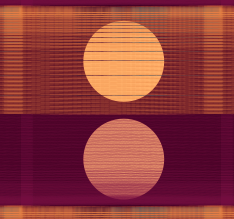Long before Christianity, evergreen plants and trees had a special meaning during winter. Just as people today decorate their homes during the festive season with pine, spruce, and fir trees, people of the past hung evergreen boughs over their doors and windows. In many countries it was believed that evergreens would keep away witches, ghosts, evil spirits, and illness.
In the Northern hemisphere, the shortest day - and longest night - of the year falls on December 21st/22nd and is called the Winter Solstice. In ancient times it was believed that the Sun was a god and that winter came every year because the Sun God had become weak. They celebrated the solstice because it meant that at last the sun god would begin to get well. Evergreen plants symbolised hope and the eternal life force which would bring new growth when the Sun God was strong again.

The ancient Romans marked the Winter Solstice with a feast called Saturnalia in honour of Saturn, the god of agriculture. Interestingly, the Winter Solstice happens when the Sun enters Capricorn - the sign ruled by Saturn.To celebrate the occasion, they decorated their homes and temples with evergreen branches. In Northern Europe the Druids, priests of the ancient Celts, also decorated their temples with evergreen boughs as a symbol of everlasting life.
The Christmas tree tradition as we now know it began in the 16th century when devout Christians brought decorated trees into their homes. Some built pyramids of wood and decorated them with evergreens and candles. It is a widely held belief that Martin Luther, the 16th-century Protestant reformer, first added lighted candles to a tree after walking home one winter evening and being inspired by the brilliance of the stars twinkling amongst the evergreen trees.

The Christmas Tree is an amalgam of many cultures and religious beliefs. Interestingly, there are no actual symbols of Christianity on a traditional Christmas Tree - unless you place an angel on the top to represent the messenger of God who announced the birth of Jesus. A star at the pinnacle of a Christmas Tree is said to be the Star Of Bethlehem - but even now, in the 21st century no-one can say for sure what the Star of Bethlehem actually was. A comet? A supernova? Perhaps a conjunction of the two 'kingmaker' planets Jupiter and Saturn? Good theory, except for the fact that Jupiter Saturn conjunctions happen every 20 years - so why would that one over 2,000 years ago have been particularly relevant? One thing is certain. The Three Wise Men - who were astrologers called The Magi - knew that what they were looking at was something very special.
Most of what we do at Christmas is not a Christian tradition but something which has its origins in nature and astrology. A Christmas tree is a Pagan symbol, the lights are stars, the baubles are planets, and the star at the top probably represents the Solstice Sun.
Merry Christmas 🎄


Merry Christmas Sue x
ReplyDeleteThank you x
DeleteWhat a lovely post. Thanks Sue, and Merry Christmas to you too 🎄🎄🎄
ReplyDeleteThank you x
DeleteThank you Sue. We really do appreciate your work.
ReplyDeleteThank you x
DeleteMERRY CHRISTMAS!!!
ReplyDeleteMerry Christmas ;-)
DeleteLooking forward to reading this fantastic blog in 2018. Keep strong, Sue and have a great Christmas. 🙂
ReplyDeleteThank you so much, Lucy xx
DeleteThis was so interesting! Thank you!
ReplyDelete